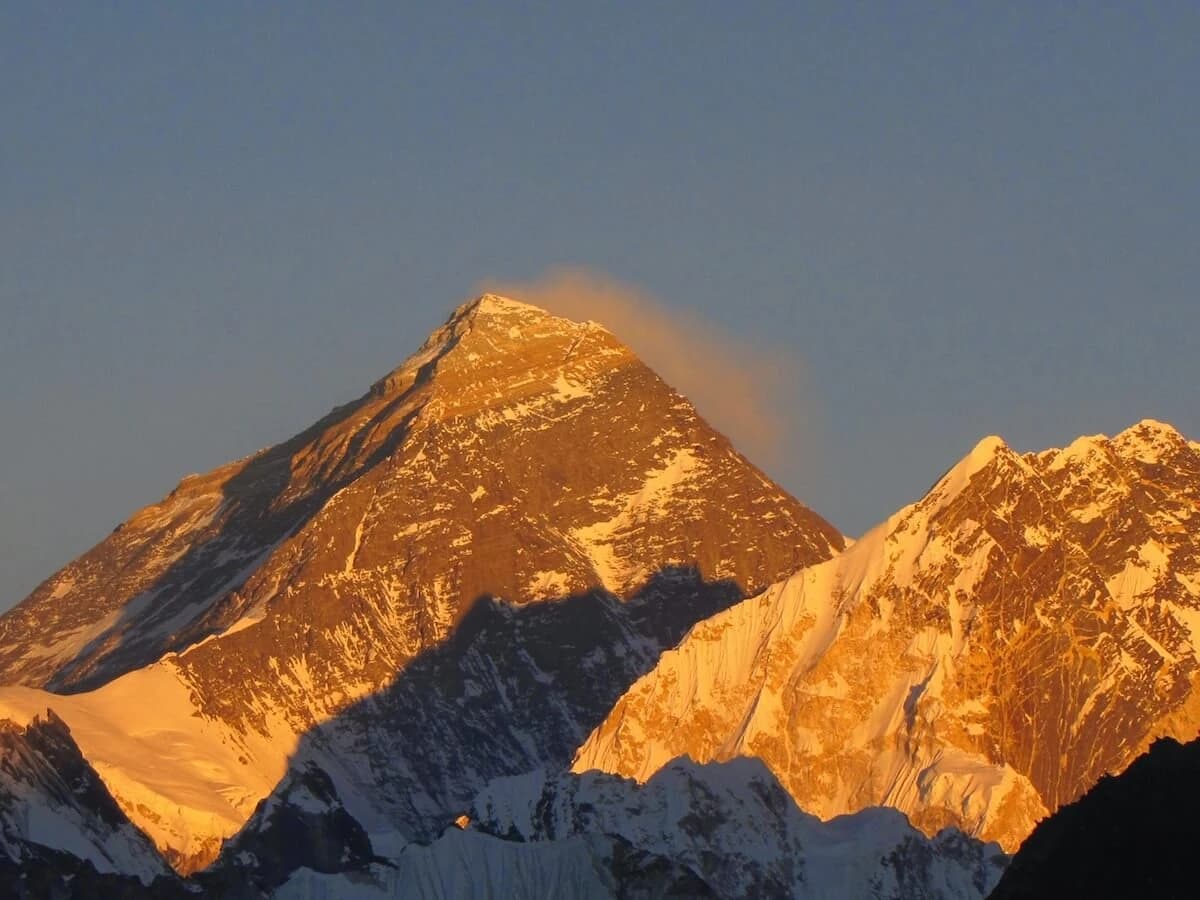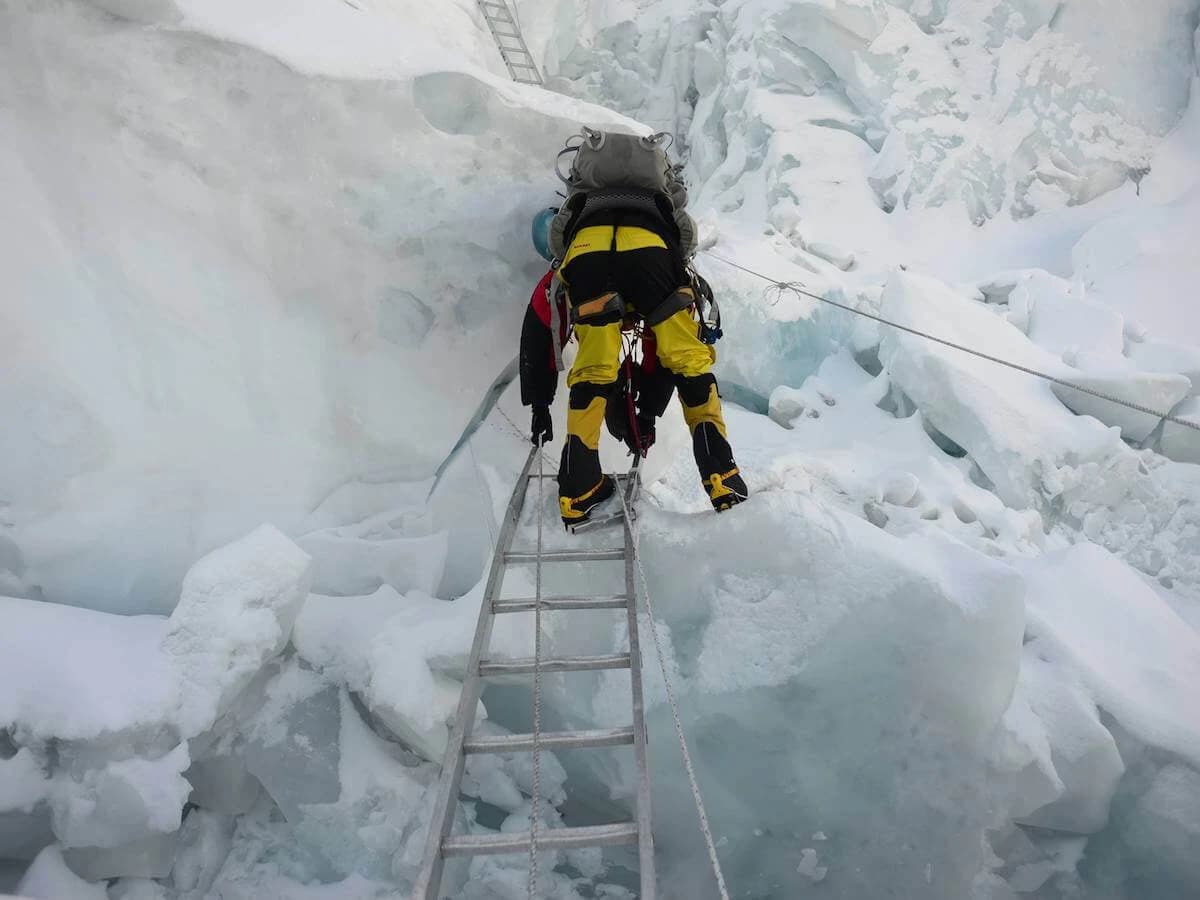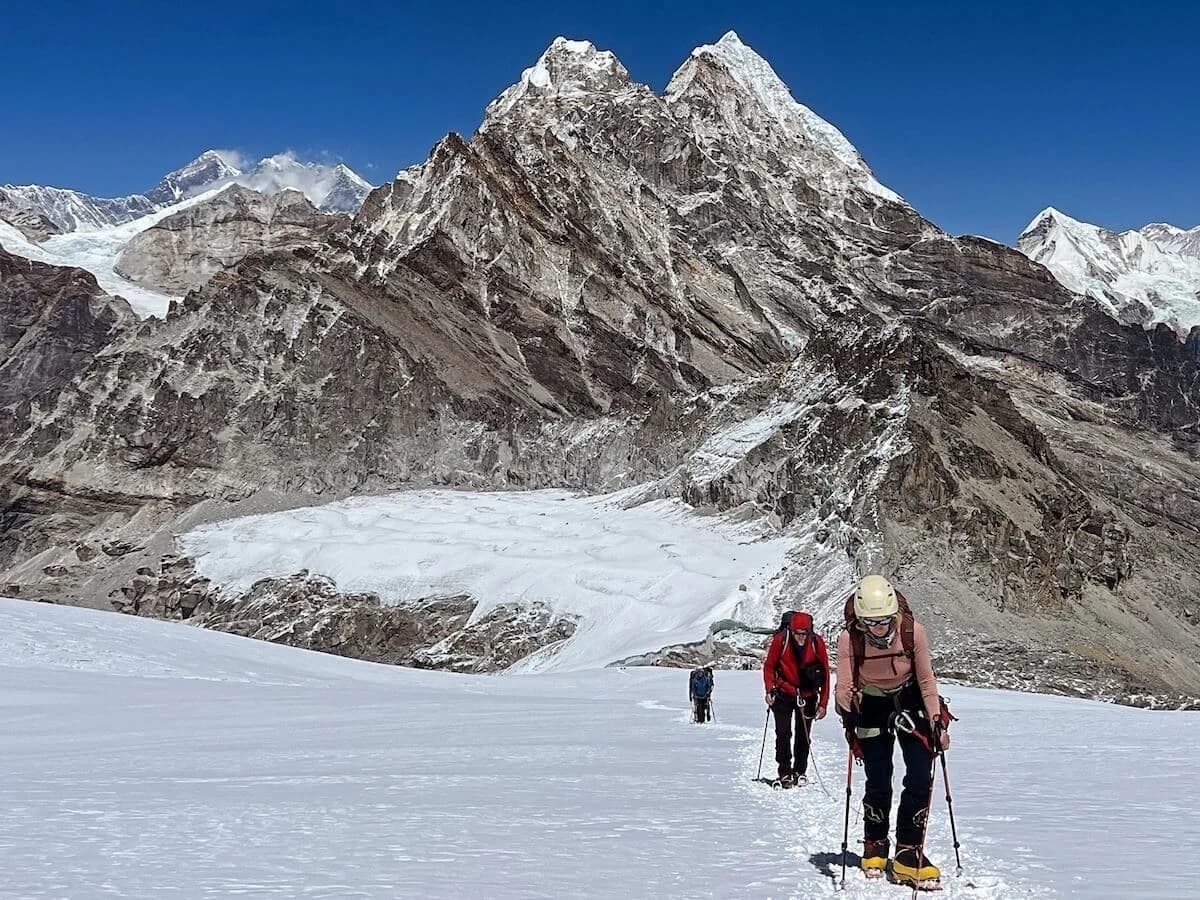A successful Mount Everest expedition is the apex dream for all climbers. The feeling of standing on the top of the world is second to none. Global alpinists take on this incredible adventure regardless of the physical pressure, costs, and risks.
Mount Everest stands between Nepal and Tibet, located in the Mahalangur Himal sub-range of the Himalayas. This mighty peak symbolizes human endurance, determination, and the spirit of exploration. Since the first attempt in 1924, many determined climbers have tried their luck at summiting the world’s tallest peak. However, it wasn’t until 1954 that Mount Everest was first conquered, making this near-impossible feat a reality. To this day, thousands of attempts have been made. While many expeditions made history, many others had disastrous endings.
Several elements play a crucial role in the successful summit of Mount Everest. To climb Mount Everest, you will require months of preparation. Some climbers further engage in rigorous physical and strength training for a prolonged duration to ensure that no stone is left unturned during the preparation stage.
Likewise, your Sherpa support staff is pivotal in helping you throughout your journey. They provide a reliable support system that guides the climbers and ensures their safety throughout the 61-day Mount Everest expedition. The expedition begins in Lukla. Climbers maintain a steady pace as they trek to Everest Base Camp. The climb enables them to acclimate to the Himalayas' high-altitude conditions and minimize the risks of altitude-related ailments.
Upon reaching Mount Everest Base Camp, the climbers prepare to ascend Mount Everest. The climbing period generally lasts 45 days, passing through four camps before finally summiting the world’s tallest peak.
Join Our Expert-Led Mount Everest Expedition
Our experienced climbers carefully plan the 61-day Mount Everest Expedition itinerary. The itinerary is crafted considering the safety and success of the expedition. If you want to take on the mighty Mount Everest and experience the incredible moment of conquering the world’s tallest peak, join our Mount Everest expedition now!
Mount Everest Expedition Camp Information: Four Camps at Different Altitudes
During the Mount Everest climbing expedition, you will set camp at four prominent points. Each camp is located at a different altitude to allow climbers to acclimatize. As altitude increases, you will experience a decrease in oxygen level. Gradual acclimatization at the four camps helps adjust the decreasing oxygen level, reducing the risks of altitude sickness as they move closer to the summit.
The key camps at different altitudes and their significance are stated below:
Camp 1: Camp 1 is located at the Khumbu Icefall at 6000 meters (20,000 feet). This is a moderate altitude where you can begin to acclimatize. In Camp 1, test your endurance and see if you can take on further challenges.
Camp 2: This camp is set up at approximately 6400 meters (21,000 feet) toward the foot of the Lhotse wall by your support staff. This is another acclimatization point. After reaching Camp 2, you return to EBC to maintain altitude adaptation.
Camp 3: Camp 3 is at the midway point from the Lhotse Face. You will find a spectacular view of the Himalayan landscape from the camp. Spend up to three nights at around 7100 meters (23294 feet) in Camp 3. Remember that the air gradually gets thinner. So, if required, you can request the use of oxygen cylinders to regulate the oxygen flow.
Camp 4: Camp 4 is the final rest point before your expedition team pushes for the Everest summit. Situated at an altitude of 8000 meters (26300 feet), this camp, also known as South Col, is located near the death zone. The conditions in Camp 4 can be extreme, with strong winds and chilling temperatures. You will spend a total of two days in Camp 4. On your ascent, you will set camp here and likewise spend another day as you descend.
Why Choose the Mount Everest Expedition with Orbit Alpine Adventure?
Expedition Led by Certified Mountaineering Experts: We prioritize your safety with the utmost and aim for a successful Mount Everest expedition. To ensure the goals of the expedition are met, we have highly experienced mountaineering experts with a proven track record of successful high-altitude mountain climbs. Their expert knowledge and experience help you and your expedition team familiarize yourselves with the terrain, weather, and emergency responses. expeditions are guided by
Acclimatization Schedule to Risk Altitude-Related Illnesses: A well-planned acclimatization schedule is crucial to minimize the risks of altitude-related ailments. Our itinerary is strategically planned and incorporates gradual ascents to a higher elevation with sufficient rest days. We also emphasize proper hydration and nutrition to ensure that you have a safe and enjoyable expedition.
Best Climbing Gear and Equipment with Oxygen Support: We provide state-of-the-art gear and equipment to ensure maximum safety and enhanced performance. In addition to industry-standard mountaineering gear and equipment that can withstand the harsh Everest conditions, you are also given adequate oxygen support for high altitudes and emergencies.
Highly trained Sherpa Support Team: Our expedition team comprises a highly trained Sherpa support crew. Sherpas are the backbone of mountaineering. Their experience and endurance in the high-altitude mountains ensure a safe and successful expedition. You will find these professional Sherpas assisting you throughout the expedition with route navigation, gear transportation, rope fixing, and emergency rescue operations.
Sustainable Everest Expedition: We are committed to preserving nature. Therefore, all our expeditions are sustainable, and we ensure the climbers comply with the environmental guidelines. Our eco-friendly camps include proper waste management and leave minimal impact while trekking.
Mount Everest Expedition Permits
Government-issued permits are mandatory for mountaineers climbing Mount Everest. Climbers also need to adhere to a certain process, which includes meeting legal and environmental regulations and hiring a registered agency like Orbit Alpine Adventure.
Below are the permits required for the Mount Everest Expedition:
Mount Everest Climbing Permit: This permit is issued by the Nepal Department of Tourism. It is necessary to enter the Sagarmatha region and climb the peaks.
Sagarmatha National Park Entry Permit: The Department of National Parks and Wildlife Conservation (DNPWC) issues the Sagarmatha National Park Entry permit, which you can collect from the Nepal Tourism Board office or Monjo.
Khumbu Pasang Lhamu Rural Municipality Entrance Permit: The Khumbu Pasang Lhamu Rural Municipality permit is a mandatory entry permit into the Khumbu region issued by the local government of the Khumbu Region. You can collect the permit from Lukla.
Refer to the Nepal Tourism Board’s official website for updated pricing information, or contact our representative for further information.
Climbing Mount Everest – Costs, Guides, Sherpas, and Transportation
Climbing Mount Everest can be expensive. You will need to meet logistical and financial challenges along the way. The cost of the expedition depends on several factors, such as permits, expedition logistics and services, an expert guide and Sherpa support team, gear and equipment, transportation, and personal preferences.
While the average Mount Everest expedition package is estimated at USD 40,000, you can select top-tier services. However, you will find these packages at a premium price, which can sometimes exceed USD 100,000. For a customized Mount Everest expedition plan and cost details, get in touch with our professional expedition team.
Peak Climbing in Nepal: Preparing for Mount Everest Expedition
Before heading for a major expedition, we recommend that you climb smaller peaks. Expert climbers suggest that these preliminary climbs will help you acclimatize and get used to the high-altitude conditions of Mount Everest. Peak climbing before heading to Mount Everest also helps climbers improve their technical strength. It is crucial to get familiar with the physical and mental endurance required during the climb.
As you acclimate to the Everest summit ascent, your guide will take you on several peak climbing expeditions in the Everest region. In this process, you will descend from various camps in Mount Everest and head to a lower-altitude area such as Lobuche or Dingboche.
From Lobuche, your expedition team will climb Lobuche Peak. After a successful ascent of Lobuche Peak, you will head to Dingboche. From here, you will take on the Island Peak expedition. Both of these peaks help you to improve your technical skills and boost morale before your Everest expedition and improve the chances of a successful Mount Everest climbing expedition.
Among many alternatives, Mount Makalu (8,485 meters) and Ama Dablam (6812 meters) are also excellent alternatives to improve your ice and rock climbing techniques. You will find similarities in the altitude, technical challenges, and steep terrains of Mount Makalu to that of Mount Everest. Similarly, Cho Oyu (8,188m), climbed from Tibet, is a less demanding 8,000-meter peak that helps climbers experience high-altitude conditions with comparatively lower risks.
Best Time for Mount Everest Expedition
Climbing Mount Everest requires proper planning and research to increase the possibility of a successful attempt. Therefore, learning about the weather patterns and seasons is crucial. Inadequate planning decreases the chances of success and risks the lives of mountaineers and the expedition team.
Spring is the ideal season to climb Mount Everest in 2025 and 2026. The spring months from April to May offer stable weather conditions. At higher altitudes, the winds decrease and the temperatures rise, making the conditions relatively moderate. You will also find that the snow is more stable. This significantly reduces the risk of avalanches and increases your chances of a successful attempt. Days are longer in spring, with better visibility for climbing. However, since more than 70% of summit attempts happen in spring, chances are that traffic congestion is high, especially during the limited climbing window.
Autumn is the secondary climbing option. While you will find some attempts between late September and early November, unpredictable weather and shorter climbing windows are the major risks. Unlike spring, autumn nights are colder with possibility of early winter storms. However, you will find fewer attempts compared to spring.
Likewise, it is best to avoid climbing Mount Everest during the monsoon season (June to August) and winter (December to February). During monsoon season, you will experience heavy snowfall with high chances of avalanches. Furthermore, the poor visibility and extreme weather conditions make climbing risky.
In the winter season, the high altitude reaches sub-zero temperatures. The extreme cold and high winds with heavy snow accumulation significantly reduce the chances of a successful Mount Everest expedition.


